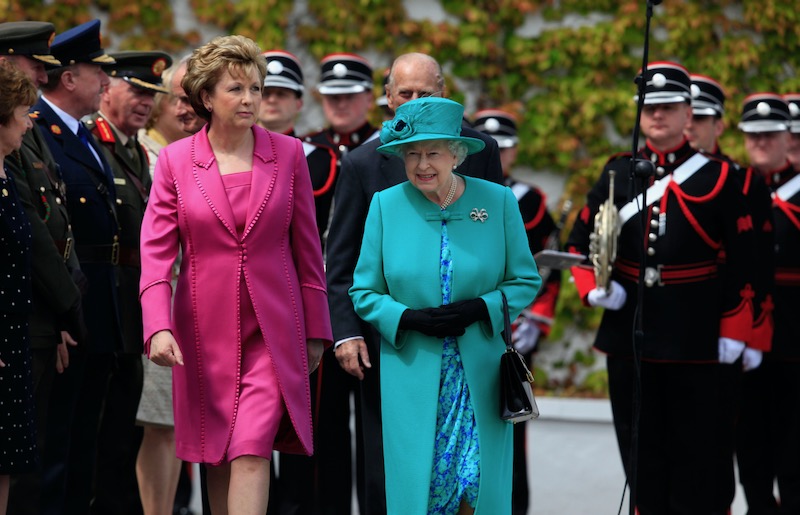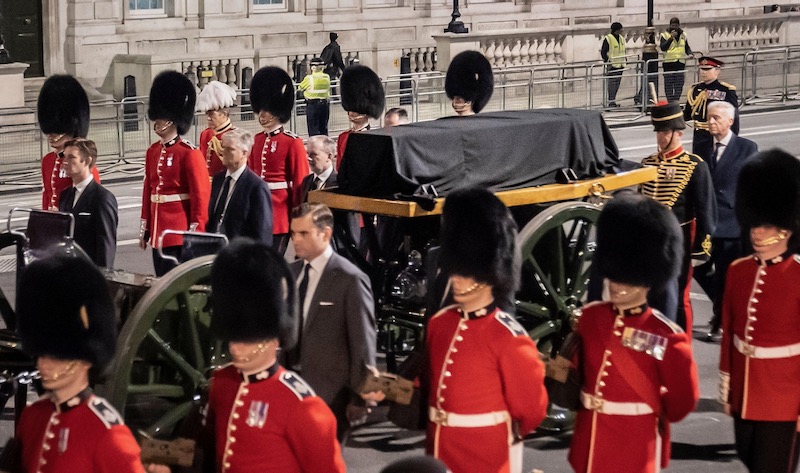“Something is missing … we need lift here … we need a ray of light.” These are the notes I scribbled onto draft four of the funeral for Her Majesty Queen Elizabeth the Queen Mother. That’s draft four following the announcement of her death on Holy Saturday 2002. I’m not taking account of the countless drafts that had led to this moment in the fifty years since her husband King George VI’s funeral in 1952.
When I scribbled the notes I was sitting in a meeting with the then dean of Westminster Abbey, Dr Wesley Carr, and James O’Donnell the Organist and Master of the Choristers, to give him his correct title, a devout Catholic and perhaps the finest living church musician. O’Donnell had won his spurs as director of “the choir down the road” as we used to refer to the Westminster Cathedral Choir. He leaves the Abbey soon, after 22 years, to take up a professorial chair at Yale University. It has been, in the words of the current dean, a “golden era”.
James and I worked together on countless “special services” – as the Abbey refers to them – one-offs which need a special attentiveness to context, congregation and communication, often in rapid succession and with sharp switches of tone. I will never forget snatching a coffee and a sandwich between the Queen Mother’s funeral and a service for families of victims of the Rwandan Genocide in St Margaret’s Church next door.
O’Donnell is a master at finding the missing element, that choice which takes a service to a different level. In the case of the fourth draft of Queen Mother’s funeral, the prayers were looking rather flat and wordy. O’Donnell had the answer. William Harris’s setting from the Salisbury Diurnal of the words “Holy is the true light” was the shaft of musical light that we needed. It created the space in which mourners were taken beyond words into the mystery of the God whose love holds all in their grief.
Harris was director of music at St George’s Chapel, Windsor. His beautiful setting of John Donne’s prayer, “Bring us, O Lord God, at our last awakening” filled St Paul’s Cathedral on the day after the Queen’s death. Harris had taught the Queen the piano. I remember her saying that it wasn’t a “happy experience” and saying “he’d had more luck with Margaret”. Harris doesn’t seem to have harboured any ill feelings. He wrote the young princesses a charming Nursery Suite for four hands at the piano.
The Queen’s funeral, like every funeral, must enable mourners – whether family and those physically present or those watching and listening virtually – to find their place in interlocking narratives. First and foremost, the narrative of Christian salvation that was the late Queen’s lifelong strength and stay. Next the narrative of the deceased – in this case the self-sacrificial life that her late Majesty modelled. And it should provide a context within which the mourner may locate their own feelings of grief, sorrow and loss and discern perhaps a new way of living, a pattern of hope, in the time that remains for them.
Expect then on Monday elements that reflect the Queen as a disciple. Her favourite hymns are well known – “Immortal, invisible”, capturing her strong sense of the transcendent mystery of God, “The Lord’s my shepherd” (to the Scottish tune, Crimond), testament to the immanent God who has walked with her. Both were used at her wedding in 1947. It would make sense, perhaps, to also include hymns which represent the other nations of the United Kingdom she sought – without entering into the political fray – to keep united. She loved the Welsh tune Cwm Rhondda, for instance, sung to the words, “Guide me, O thou great redeemer”.
Might it make sense for one biblical reading to be John 13, the account of the washing of the feet? This is after all central to the annual Royal Maundy liturgy. But most liturgies that have involved celebration of the Queen’s life of service have not made such a directly Christ-like comparison. She was far too humble to accept such a parallel. She saw her subjects as fellow pilgrims with her. So, perhaps, something more like Philippians 4, and the list of qualities to which we may all aspire?
Every royal funeral has used William Croft’s Funeral Sentences – settings of seven verses from the Bible – since they were sung at Handel’s funeral in 1759; they include Henry Purcell’s setting of “Thou knowest, Lord, the secrets of our hearts”, written for the funeral of Queen Mary II in 1695. The singing of the National Anthem, with the words, “God save the King”, will be one of the most poignant moments of all.
The late Duke of Edinburgh frequently expressed strong views about liturgy which the Queen seems to have shared. “We like in and out religion,” he once said to me, “not up and down religion and not longer than 45 minutes”. I cheekily asked him what he meant by this, knowing full well the answer he would supply: “Traditional hymns, collects not intercessions, not being made to stand, sit and kneel endlessly, and a short sermon.” The present Archbishop of Canterbury – nine years in office – is the master of the latter, as was the predecessor closest to him in pastoral style and theology, Donald Coggan. Expect eight minutes. “People fidget if it’s longer,” as the Duke would say. Expect, too, ecumenical participation and interfaith attendance. The Queen valued this enormously. The Prime Minster has already been asked to read one of the lessons. Perhaps the Commonwealth Secretary General or the Cardinal Archbishop of Westminster for the other?
We can’t be sure of the precise details and that’s as it should be. But at the risk of what my youngest son calls a spoiler alert do expect to be dazzled and moved by the sight of the Imperial State Crown on the late Queen’s coffin, together, perhaps, with white lilies. When the Queen placed flowers on her mother’s coffin, she signed the card, “Lilibet”. It was a gesture from a daughter that brought home the deep human significance of the moment. Spare more than a thought for King Charles III and his three siblings and the Queen’s grandchildren and great-grandchildren.
For the fiftieth anniversary of the Queen’s coronation James O’Donnell and I were again looking for that elusive element to lift the liturgy. We settled on the composer Jonathan Harvey. But what words were we to ask him to set? At a Commonwealth Day reception I hesitantly asked the Queen if I would be right in thinking that one of her favourite prayers had been written by Joseph Armitage Robinson, dean of Westminster in the early years of the twentieth century, for the (proposed) 1928 Anglican Book of Common Prayer. I rattled off the first line; she replied, somewhat enigmatically, “I think you may indeed be correct in thinking so.” She was to find Harvey’s setting deeply moving. Perhaps it’s better not to repeat such moments, but all of us can make the words our own:
“Remember, O Lord, what thou hast wrought in us and not what we deserve; and as thou hast called us to thy service, make us worthy of our calling; through Jesus Christ our Lord.”
Chris Chivers teaches religion and philosophy at UCL Academy. London



 Loading ...
Loading ...
What do you think?
You can post as a subscriber user ...
User comments (0)